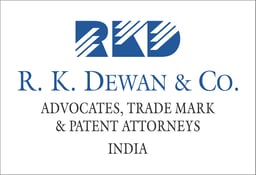News and developments
Not all computer related inventions are non-patentable!
In 2002, Ferid Allani (“Allani”) filed a patent application (IN/PCT/2002/00705/DEL) for his computer related invention titled, “method and device for accessing information sources and services on the web”. As per the Complete Specification, “the invention proposes a method for accessing information sources and services on the Web, that is quicker and easier to use than the present methods for accessing information on internet, notably with an objective of integration within interactive terminals and office automation and communication equipment.” The Indian Patent Office rejected this application stating that it lacked novelty and was hit by the provisions of Section 3 (k) of the Indian Patents Act.
Section 3 (k) of the Patents Act reads as follows:
3. What are not inventions. -The following are not inventions within the meaning of this Act,-
(k) a mathematical or business method or a computer programme per se or algorithms;
Allani appealed to the Intellectual Property Appellate Board (“IPAB”) against the order of the Controller. However, the appeal was dismissed by the IPAB stating that the patent application did not disclose any technical effect or technical advancement.
Allani then appealed to the Delhi High Court in the case of Ferid Allani v. Union of India & Ors W.P.(C) 7/2014 & CM APPL. 40736/2019
citing various claims in the patent specification to show that it disclosed a ‘technical effect’ and a ‘technical advancement’. Allani further contended that the invention is not merely a software invention that can be simply loaded on to a computer, for it also requires a particular method of implementation. He relied upon the Draft Guidelines for Examination of Computer Related Inventions, 2013.
The Defendant submitted that since IPAB had put forth its technical view on the patentability of the invention, the Court could not pass an order with regards to the technical arguments raised before such a Tribunal.
However, the Court held that,“The bar on patenting is in respect of `computer programs per se….’ and not all inventions based on computer programs. In today’s digital world, when most inventions are based on computer programs, it would be retrograde to argue that all such inventions would not be patentable. Innovation in the field of artificial intelligence, blockchain technologies and other digital products would be based on computer programs, however the same would not become non-patentable inventions – simply for that reason. It is rare to see a product which is not based on a computer program”.
Thus, the Court held that in light of the amendments to the Guidelines with respect to Computer Related Inventions and the judicial precedents in this regard, since 2013, the meaning of ‘technical effect’ has been clearly churned out. The wisdom of these guidelines and judicial pronouncements was not applied to Allani’s invention as it had not evolved when the application was examined for the first time, in 2005. The Court asked the Patent Office to re-examine the patent application in light of the above observations and in accordance with the Guidelines, judicial precedents, settled practices of patent offices in examining such patent applications.
